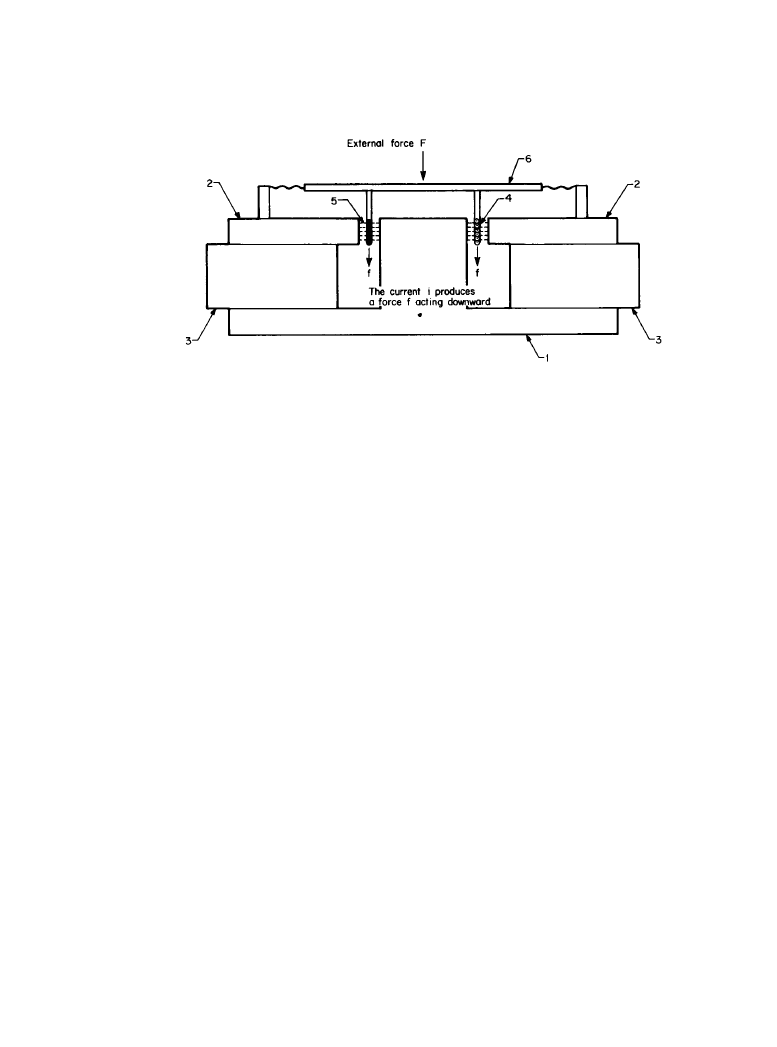ВУЗ: Казахская Национальная Академия Искусств им. Т. Жургенова
Категория: Книга
Дисциплина: Не указана
Добавлен: 03.02.2019
Просмотров: 21660
Скачиваний: 19

5-2 Section Five
Chapter 5.2: Direct-Radiator Loudspeakers
5-17
Introduction
5-17
Piston Source in an Infinite-Plane Baffle
5-17
Baffle Shape and Acoustic Characteristics
5-20
Acoustic Characteristics of Rigid Disk with Constant-Force Drive
5-22
Bibliography
5-25
Chapter 5.3: Dynamic-Type Direct-Radiation Speakers
5-27
Introduction
5-27
Operational Details
5-27
Equivalent Circuit and Frequency Response
5-28
Efficiency
5-32
Nonlinear Distortion
5-34
Driving-Force Distortion
5-34
Support-System Distortion
5-35
Air Distortion
5-38
Frequency-Modulation Distortion
5-39
Diaphragm and Support System
5-41
Diaphragm
5-41
Support System
5-41
Bibliography
5-44
On the CD-ROM
•
“Sound Reproduction Devices and Systems” by Katsuaki Satoh, an archive chapter from the
first edition of the Audio Engineering Handbook. This material provides an excellent, in-
depth examination of a wide variety of loudspeakers.
References for this Section:
Allison, R., et at.: “On the Magnitude and Audibility of FM Distortion in Loudspeakers,” J.
Audio Eng Soc., vol. 30, no. 10, pg. 694, 1982.
Beranek, L. L.: Acoustics, McGraw-Hill, New York, N.Y., pg. 183–185, 1954.
Hayasaka, T., et al.: Onkyo-Kogaku Gairon (An Introduction to Sound and Vibration), Nikkan
Kogyo Shinbunshya, pg. 67, 1973 (in Japanese).
Hayasaka, T., et al.: Onkyo-Shindo Ron (Sound and Vibration), Maruzen Kabushikigaishya, pg.
201, 1974 (in Japanese).
Hirata, Y.: “Study of Nonlinear Distortion in Audio Instruments,” J. Audio Eng. Soc., vol. 29, no.
9, pg. 607, 1981.
Kinsler, L. E., et al: Fundamentals of Acoustics, Wiley, New York, N.Y., 1982.
Melillo, L., et al.: “Ferrolluids as a Means of Controlling Woofer Design Parameters,” presented
at the 63d Convention of the Audio Engineering Society, vol. 1, pg. 177, 1979.
Morse, P. M.: Vibration and Sound, McGraw-Hill, New York, N.Y., pg. 326, 1948.
Downloaded from Digital Engineering Library @ McGraw-Hill (www.digitalengineeringlibrary.com)
Copyright © 2004 The McGraw-Hill Companies. All rights reserved.
Any use is subject to the Terms of Use as given at the website.
Sound Reproduction Devices and Systems

Sound Reproduction Devices and Systems 5-3
Morse, P. M., and K. U. Ingard: Theoretical Acoustics, McGraw-Hill, New York, N.Y., pg. 366,
1968.
Niguchi, H., et al.: “Reinforced Olefin Polymer Diaphragm for Loudspeakers,” J. Audio Eng.
Soc., vol. 29, no. 11, pg. 808, l981.
Okahara, M., et al: Audio Handbook, Ohm Sya, pg. 285, 1978 (in Japanese).
Olson, H. F.: Elements of Acoustical Engineering, Van Nostrand, Princeton, N.J., 1957.
Rayleigh, J. W. S.: The Theory of Sound, Dover, New York, N.Y., pg 162, 1945.
Sakamoto, N.: Loudspeaker and Loudspeaker Systems, Nikkan Kogyo Shinbunshya, pg. 36,
1967 (in Japanese).
Sakamotoet, N., et. al.: “Loudspeaker with Honeycomb Disk Diaphragm,” J. Audio Eng. Soc.,
vol. 29, no. 10, pg. 711, 1981.
Shindo, T., et al: “Effect of Voice-Coil and Surround on Vibration and Sound Pressure Response
of Loudspeaker Cones,” J. Audio Eng. Soc., vol. 28, no 7–8, pg. 490, 1980.
Suwa, H., et al.: “Heat Pipe Cooling Enables Loudspeakers to Handle Higher Power,” presented
at the 63d Convention of the Audio Engineering Society, vol. 1, pg. 213, 1979.
Suzuki, H., et al.: “Radiation and Diffraction Effects by Convex and Concave Domes,” J. Audio
Eng Soc., vol. 29, no. 12, pg. 873, 1981.
Takahashi, S., et al.: “Glass-Fiber and Graphite-Flake Reinforced Polyimide Composite Dia-
phragm for Loudspeakers,” J. Audio Eng. Soc., vol. 31, no. 10, pg. 723, 1983.
Tsuchiya, H., et al.: “Reducing Harmonic Distortion in Loudspeakers,” presented at the 63d
Convention of the Audio Engineering Society, vol. 2, pg. 1, 1979.
Yamamoto, T., et al.: “High-Fidelity Loudspeakers with Boronized Titanium Diaphragm,” J.
Audio Eng. Soc., vol. 28, no. 12, pg. 868, 1980.
Yoshihisa, N., et al.: “Nonlinear Distortion in Cone Loudspeakers,” Chuyu-Ou Univ. Rep., vol.
23, pg. 271, 1980.
Downloaded from Digital Engineering Library @ McGraw-Hill (www.digitalengineeringlibrary.com)
Copyright © 2004 The McGraw-Hill Companies. All rights reserved.
Any use is subject to the Terms of Use as given at the website.
Sound Reproduction Devices and Systems

Downloaded from Digital Engineering Library @ McGraw-Hill (www.digitalengineeringlibrary.com)
Copyright © 2004 The McGraw-Hill Companies. All rights reserved.
Any use is subject to the Terms of Use as given at the website.
Sound Reproduction Devices and Systems

5-5
Chapter
5.1
Electroacoustic Transducers
Katsuaki Satoh
5.1.1
Introduction
Conversion from electrical signals to acoustic signals ordinarily does not involve direct electroa-
coustic transformation; the electrical signal is transformed into mechanical vibration, which then
is transformed into an acoustic signal.
The following transducers are used in the audio field generally as electromechanical trans-
ducers: electrodynamic transducers, electromagnetic transducers, electrostatic transducers, and
piezoelectric transducers.
5.1.2
Basic Equations and Features of Dynamic Transducers
Among the various forms of transducers listed above, the electrodynamic type is the basis for the
design of the majority of loudspeakers in use today. Invented by C. W. Rice and E. W. Kellogg in
1925, when combined with the vacuum-tube amplifier, it provided the means for the use of audio
technology in applications far greater than the telephone, introduced 50 years earlier by Alex-
ander Graham Bell. Figure 5.1.1 shows the principle of operation. A permanent magnet and
magnetic-pole pieces form a uniform magnetic field in the gap. The coil vibrating direction is at
right angles to the magnetic field so that the force acts on the coil in accordance with the Flem-
ing rule. This relationship is expressed by the following equation
(5.1.1)
Where:
F
d
= driving force, N
B = flux density, Wb/m
2
l = total length of coil, m
I = current flowing into coil, A
F
d
BlI
=
Downloaded from Digital Engineering Library @ McGraw-Hill (www.digitalengineeringlibrary.com)
Copyright © 2004 The McGraw-Hill Companies. All rights reserved.
Any use is subject to the Terms of Use as given at the website.
Source: Standard Handbook of Audio and Radio Engineering

5-6 Sound Reproduction Devices and Systems
Assuming the velocity at which a coil moves by means of driving force F
d
to be v, the electro-
motive force E
d
arising from this movement is in the opposite direction to the direction of current
I. Therefore, E
d
is determined by
(5.1.2)
Where:
E
d
= counterelectromotive force (V)
v = moving-coil velocity (m/s)
BI in Equations (5.1.1) and (5.1.2) is called the power coefficient A, which shows the conver-
sion efficiency of a dynamic transducer. Assuming the mechanical impedance of the vibrating
system as viewed from the coil side to be Z
m
, the force acting on the coil corresponds to a sum-
mation of external forces F and driving forces F
d
, which is balanced with drag Z
m
v.
(5.1.3)
Where:
F = external force, N
F
d
= driving force, N
Z
m
= mechanical impedance of the vibrating system, mechanical ohms
By substituting Equation (5.1.1), F is found as follows
(5.1.4)
E
d
Bl
υ
–
=
F
F
d
+
Z
m
υ
=
F
Z
m
υ AI
–
=
Figure 5.1.1
Simplified form of a moving-coil transducer consisting of a voice coil cutting a mag-
netic field of a flux density
B. 1, 2 = pole pieces; 3 = permanent magnet; 4 = voice coil; 5 = mag-
netic flux; 6 = diaphragm.
Downloaded from Digital Engineering Library @ McGraw-Hill (www.digitalengineeringlibrary.com)
Copyright © 2004 The McGraw-Hill Companies. All rights reserved.
Any use is subject to the Terms of Use as given at the website.
Electroacoustic Transducers